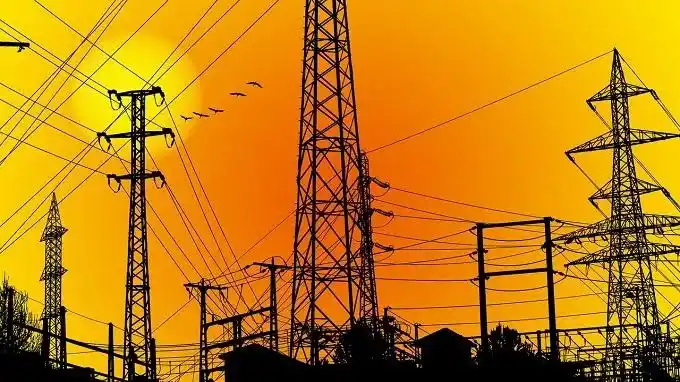
Power usage: Do Blenders Use a Lot of Electricity?
Blenders have become an integral part of modern kitchens, offering convenience in preparing a variety of culinary delights. However, as we embrace these kitchen companions, it’s essential to explore a pertinent question: Do blenders use a lot of electricity? That’s what we’re here to explore. Let’s find out why it matters for your energy bill and the environment.
Understanding the electricity consumption of blenders is crucial not only for managing household energy bills but also for making environmentally conscious choices.
Factors Influencing Blender Electricity Consumption

Different blenders come in various shapes and sizes, and they don’t all sip electricity the same way. Blender electricity usage is influenced by several factors. The type and model of the blender play a significant role, with differences in energy efficiency.
Some are built to be energy-efficient, while others might be a bit more power-hungry. The power of the motor also plays a role. A more potent motor might blend things faster but could use more electricity in the process. Even the various operating settings on your blender, like the speed options, can affect how much energy it consumes.
Understanding these factors is like learning the language of blenders – it helps you know what to expect when it comes to electricity use.
Understanding Blender Energy Efficiency
Energy efficiency is a key consideration when evaluating the impact of blenders on electricity usage. Imagine two blenders side by side. One blends your morning smoothie just as well as the other, but it uses less electricity. That’s the magic of energy efficiency. It’s like having a powerful blender that doesn’t max out your electricity bill.
Energy efficiency in blenders is all about doing more with less power. Manufacturers design some blenders to be more energy-efficient by using smarter technology. So, you get the same tasty smoothie, but your wallet and the planet thank you for using less electricity.
As you navigate the blender aisle or browse online for your perfect blending companion, keep an eye out for signs of energy efficiency. It might be a little label indicating the blender’s green credentials or a note about how it won’t put a strain on your electricity usage.
Curious about how blenders affect your monthly bills? Let’s move on to discover “How Blenders Affect Your Bills.”
How Blenders Contribute to Electricity Bills
Ever glanced at your electricity bill and wondered, “How much of this is my blender’s doing?” It’s a valid question, considering blenders are often busy whirring away in the kitchen.
To comprehend the impact on household energy bills, it’s crucial to understand how blender electricity consumption is calculated.
Understanding how blenders contribute to your bills involves a bit of math. Imagine your blender as a hungry eater – it “consumes” electricity. The amount depends on factors we discussed earlier: the type, model, motor power, and your blender habits (like the settings you use).
Comparing blender energy use to other household appliances provides context. While blenders aren’t usually the biggest electricity guzzlers in the kitchen, every bit adds up. That’s why it’s worth considering how your blender fits into the larger picture of your home’s energy consumption.
To explore more and clear up some common misconceptions about blender electricity use, take a look at the popular misunderstanding below!
Common Misconceptions
Addressing misconceptions is vital in providing clarity on blender electricity usage. Blender myths can swirl around as much as a perfectly blended smoothie. It’s time to set the record straight on a few common misconceptions:
Myth 1: All Blenders Use the Same Amount of Electricity
Reality: Nope, they don’t. Blender energy use varies based on factors we’ve discussed – type, model, and settings. Some blenders are like energy-saving champions, while others might be a bit more demanding.
Myth 2: Blenders Don’t Affect Your Overall Energy Bill Much
Reality: While blenders might not be the main culprits in your high energy bills, they still contribute. Understanding their impact can help you manage your overall energy consumption more effectively.
Myth 3: Faster Blending Always Means More Electricity Use
Reality: It’s not always true. Yes, a powerful motor can blend things faster, but that doesn’t necessarily mean it’s chugging more electricity. Some blenders are designed to be efficient even at higher speeds.
By debunking these myths, we’re aiming to provide a clearer picture of how blenders fit into your energy usage.
Tips for Reducing Blender Electricity Consumption
Practical tips on reducing blender electricity consumption are valuable. Reducing the electricity your blender uses doesn’t mean sacrificing your favorite smoothies. Here are some simple tips:
- Maintain Your Blender: Keep it clean and in good shape. A well-maintained blender operates more efficiently, using less electricity.
- Smart Usage: Blend in batches, especially if you’re making large quantities. This can be easier on your blender and use less electricity than one long blending session.
- Use the Right Setting: Many blenders have different speed options. For tasks like chopping, you might not need the highest speed, which can save electricity.
- Consider Energy-Efficient Models: When it’s time to upgrade, look for blenders with energy-efficient features. They often have technologies that use less power without compromising performance.
By incorporating these tips into your blending routine such as Proper maintenance practices, smart usage tips, and the option of upgrading to energy-efficient models, you can enjoy your favorite treats while being mindful of electricity usage.
Case Studies
To get a better understanding of how blenders perform in the energy consumption department, let’s explore a few real-world case studies.
Case Study 1: The Energy-Efficient Blender
Meet NutriBullet Pro 900, an energy-efficient model. Despite having a powerful motor, NutriBullet Pro is designed to use electricity wisely. Users report that it blends smoothly without causing a significant spike in their electricity bills.
Case Study 2: The Heavy-Duty Blender
Now, let’s consider Vitamix A3500, known for its heavy-duty performance. While it blends quickly, users notice a slightly higher electricity usage compared to NutriBullet 900 Pro. It’s a trade-off between speed and energy efficiency.
By comparing these case studies, users can see how different types of blenders may impact their electricity bills.
Blender Energy Labels
Have you ever noticed those little labels on appliances that talk about energy efficiency? Well, blenders have them too! These labels provide valuable information about how much electricity a blender is likely to use.
Understanding the energy Labels:
- Energy Ratings: Look for energy ratings on the blender. Higher ratings usually mean better energy efficiency.
- Usage Information: Some labels offer estimates of annual electricity usage. This can give you a clearer picture of the blender’s long-term impact on your energy bills.
- Green Certifications: Keep an eye out for any green certifications or eco-friendly labels. These indicate that the blender meets certain environmental standards.
By paying attention to these labels, you can make an informed choice when picking out a blender.
Environmental Impact
Beyond just affecting your bills, blenders can leave an environmental footprint. Here’s what to consider:
Energy Source: Think about where your electricity comes from. If it’s from renewable sources, using your blender might have a smaller environmental impact. But if it’s from less sustainable sources, it contributes more to your carbon footprint.
Waste Generation: Some blenders come with disposable parts or excessive packaging. Opting for blenders with minimal waste can be a small but meaningful step toward a greener lifestyle.
Longevity and Disposal: A durable blender that lasts longer is generally better for the environment. Also, consider how easy it is to recycle or properly dispose of your blender when its time is up.
Making eco-friendly choices with your blender can be part of a larger effort to reduce your overall environmental impact.
User Reviews and Experiences
The best insights often come from those who’ve been there and done that. Here’s what users are saying about their blender electricity usage experiences:
User A: “Energy Saver!”
“I switched to Cuisinart CBT-1500 and noticed a drop in my electricity bill. It’s surprisingly powerful for its energy efficiency. I use it daily for smoothies, and it’s a game-changer.”
User B: “Speedy and Worth It”
“Vitamix A3500 is a bit faster, but I did see a slight increase in my electricity bill. For the time it saves, I find it worth it. Just something to consider based on your priorities.”
By hearing from real users, you can gather practical insights into how different blenders perform in everyday scenarios.
Government Regulations and Standards
Governments often set rules to ensure that the appliances we use meet certain standards. Here’s a glimpse of what goes on behind the scenes:
Regulations Overview:
- Energy Efficiency Standards: Many countries have regulations that define the minimum energy efficiency requirements for appliances, including blenders. Manufacturers must meet these standards to sell their products.
- Compliance and Enforcement: Agencies are in place to ensure that manufacturers follow these regulations. They conduct tests and checks to verify that blenders on the market meet the specified energy efficiency standards.
Understanding these regulations helps you trust that the blender you’re eyeing has met certain criteria for energy efficiency.
Future Trends in Blender Technology
Technology is always evolving, and blenders are no exception. Exploring emerging technologies for energy-efficient blenders is crucial for staying informed about advancements in the market. Here’s a glimpse of what the future might hold:
Emerging Technologies:
- Smart Blenders: Imagine a blender that adjusts its power usage based on what you’re blending. Smart technology could optimize energy efficiency.
- Innovative Motor Designs: Manufacturers might develop motors that maintain high performance while consuming less electricity, making future blenders even more energy-efficient.
Staying up-to-date about these potential advancements can help you make forward-thinking decisions when it’s time for a blender upgrade. More to all that has been said, If you’re interested in comparing blenders to other kitchen appliances or exploring consumer awareness and education, take a look at the below
Comparison with Other Kitchen Appliances
Contrasting blender energy usage with other common kitchen appliances provides perspective. So How does your blender stack up against other kitchen gadgets when it comes to electricity use? Let’s take a closer look:
Contrasting Consumption:
- Refrigerators and Ovens: These appliances typically use more electricity than blenders. However, understanding the differences can help you manage overall energy consumption.
- Coffee Makers and Toasters: These smaller kitchen companions generally use less electricity than blenders. It’s interesting to see how different appliances contribute to your kitchen’s energy needs.
By comparing, you can prioritize energy-efficient choices in your kitchen
Consumer Awareness and Education
Consumer awareness is important in promoting responsible blender usage. This final piece of the puzzle is making sure consumers like you have the knowledge needed to make informed decisions:
Importance of Education:
- Understanding Labels: Educating consumers about blender energy labels ensures they can interpret the information and choose models aligned with their energy efficiency goals.
- Resource Provision: Providing resources, such as guides on energy-efficient blender usage and maintenance, empowers consumers to maximize efficiency and minimize electricity consumption.
By raising awareness and providing education, consumers can become savvy decision-makers, choosing appliances that align with their needs and values. As we wrap up,
Conclusion
Understanding the electricity usage of blenders empowers users to make wise choices, balancing convenience and sustainability. Factors like type, model, and energy labels play crucial roles. Real-world examples and user reviews provide practical insights, while awareness of regulations and emerging technologies guide future decisions. By considering the environmental impact and comparing it with other appliances, consumers can navigate the blender landscape wisely, contributing to both energy savings and a greener planet.
